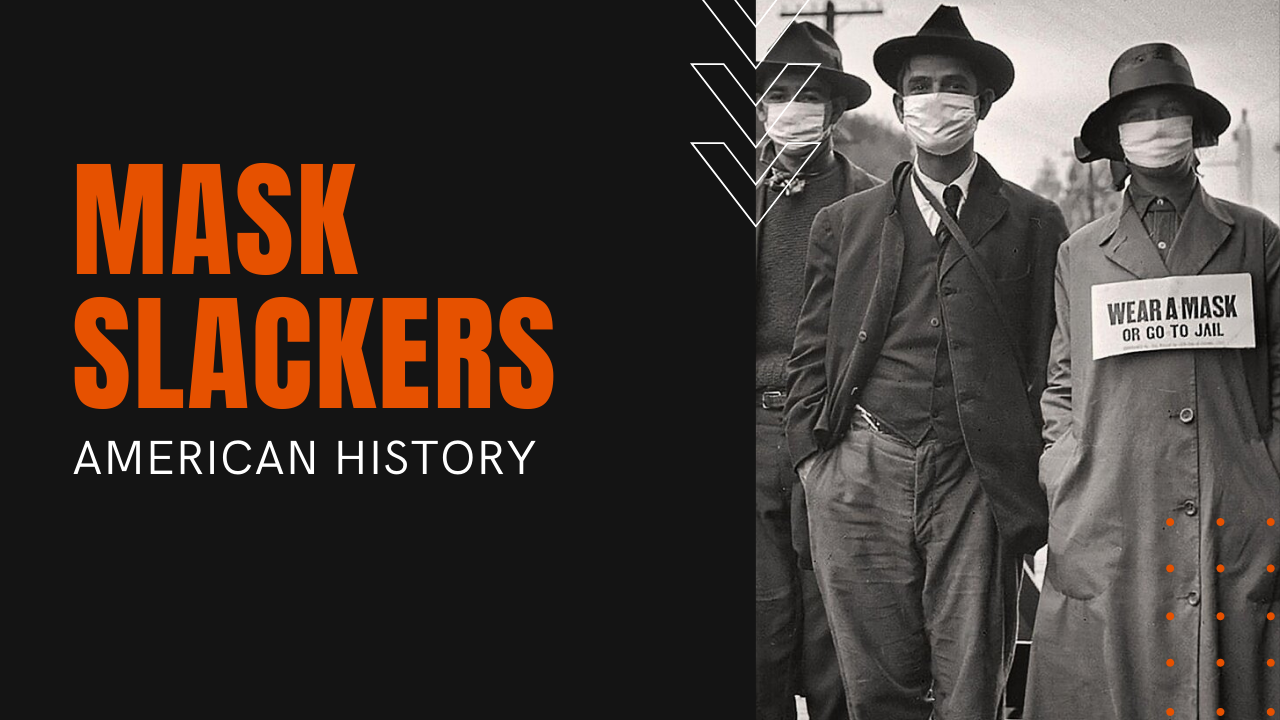Mask Slackers and the Spanish Flu of 1918

While the Spanish Flu pandemic of 1918 extracted a far greater mortality than the Coronavirus pandemic of 2020—an estimated 50 to 100 million lives worldwide—health officials in 1918 grappled with the same mask slacker behaviors widely experienced in 2020.
Much like COVID-19 lockdowns, the Spanish Flu saw the same closures of schools, businesses and theaters, while public health officials encouraged people to cough or sneeze into a handkerchief—a practice that didn’t completely catch on until after the pandemic was over.
In Philadelphia, streetcar signs warned that spitting spread death, while the New York City health department even advised people not to kiss except through a handkerchief. In western states, some cities adopted mandatory mask ordinances, posing the argument that wearing one was a patriotic duty.
In October of 1918, the San Francisco Chronicle ran a public service announcement which said that “The man or woman or child who will not wear a mask now is a dangerous slacker,” which was a direct reference to the type of World War One “slacker” who refused to fight or help out in the war effort.
Second Spike in Spanish Flu Cases
One sign in California went so far as to threaten jail time for any and all mask slackers who refused to comply. For the most part, Americans in the western United States complied with the original mask order, but when a second spike in cases hit in January 1919, leading San Francisco officials to implement a second masking order, the mandate was met with increasing resistance.
At the behest of the Surgeon General’s office, newspapers around the country published a cartoon of a man hacking in public that warned, “Coughs and Sneezes Spread Diseases: As Dangerous as Poison Gas Shells;” another direct reference between fighting the flu and fighting the First World War.
“The value of fresh air through open windows cannot be overemphasized,” Surgeon General Rupert Blue wrote to the American people. “When crowding is unavoidable, as in streetcars, care should be taken to keep the face so turned as not to inhale directly the air breathed out by another person.”
Today, while pandemics are far from new to humanity, the one certainty, it appears, is that human behavior, both then and now, is the primary vector that guarantees the spread of a newly-arrived pathogen into a worldwide health disaster.
